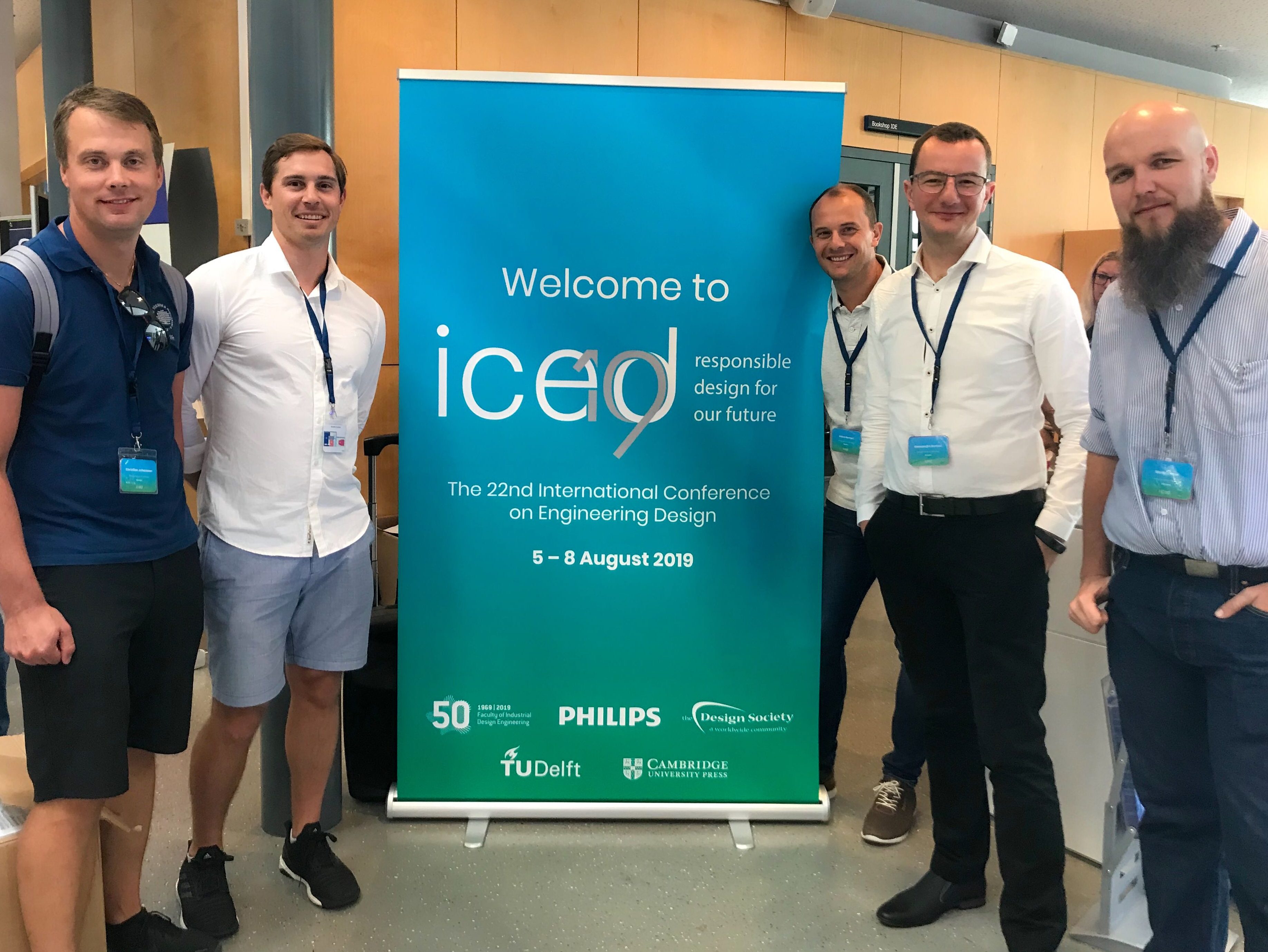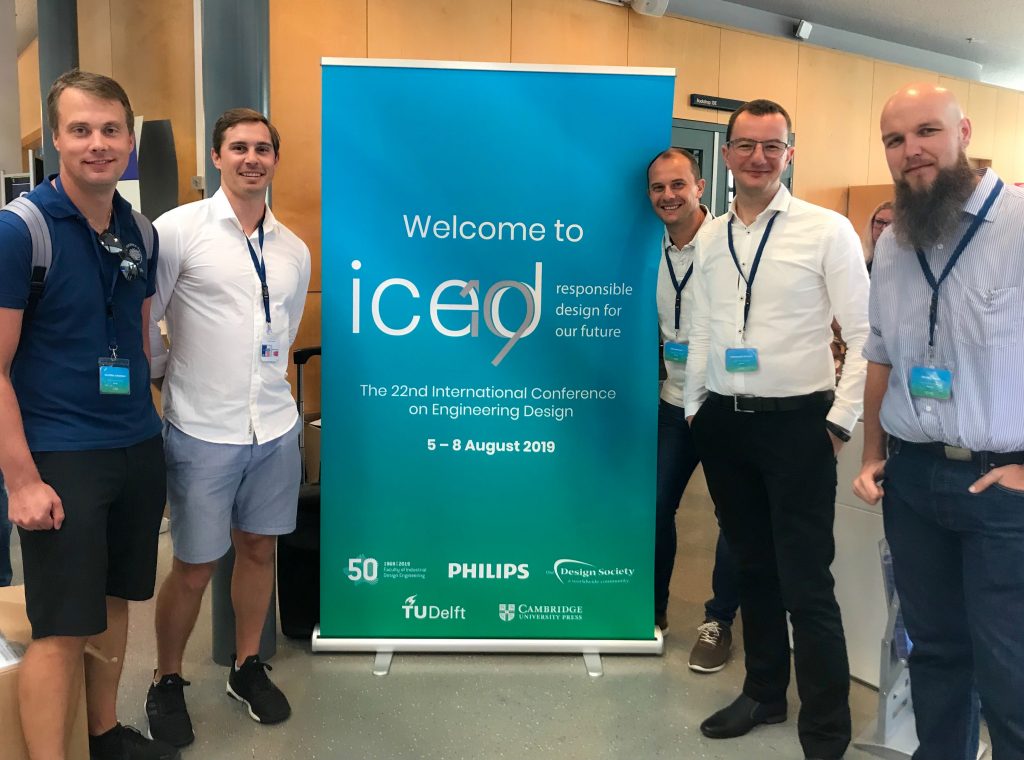
BTH PDRL at the 22nd International Conference on Engineering Design 2019
- Post by: Tobias Larsson
- 5th August 2019
- No Comment
“Responsible Design for Our Future” is the theme for this year’s International Conference on Engineering Design (ICED http://www.iced19.org), which will be held in Delft, The Netherlands.

ICED biannual conferences are organized by the Design Society and represent premiere forums where the design community comes together to share insights, discover new ideas, and to stay abreast of new developments in the field. From its engineering roots, ICED has evolved over the past 37 years to cover a wide area of design-related topics.
The conference will be held at the Delft University of Technology campus from Aug. 5-8, 2019.
PDRL attends with three research papers and participation/co-hosting of workshops over the 3 day conference. Alessandro will be chairing the workshop of the SIG Design Practice. Marco will be chairing the “Value Driven Design” session, and Alessandro witll be chairing the “Design Thinking Implemenation” session.

Here below the list of PDRL papers accepted for ICED’19, where 3 of the papers have co-authors from industry:
Bertoni, A., M. Bertoni (2019). Supporting early stage set-based concurrent engineering with Value Driven Design

Abstract: Set-Based Concurrent Engineering is commonly adopted to drive the development of complex products and systems. However, its application requires design information about a future product that is often not mature enough in the early design stages, and that it is not encompassing a service and lifecycle- oriented perspective. There is a need for manufacturers to understand, since the early design stages, how customer value is created along the lifecycle of a product from a hardware and service perspective, and how to use such information to screen radically new technologies, trade-off promising design configurations and commit to a design concept. The paper presents an approach for the multidisciplinary value assessment of design concepts in sub-systems design, encompassing the high-level concept screening and the trade-off of different design concepts, and enabling the integration of value models results into a Set-based Concurrent Engineering process. The approach is described through its application in the case study of the development of a subsystem component for a commercial aircraft engine.
DOI: https://doi.org/10.1017/dsi.2019.243
Bertoni, M. A. Bertoni, H. Eres Murat (2019). Value Driven Design Revisited: Emerging Modelling Concepts And Applications.

Abstract: Extended product warranties, leasing, and pay-per-use schemes are few examples of how manufacturing companies are shifting their focus from selling products to offering “solutions”, combining products and services to maximise customer value. The idea of optimising a system towards the best ‘value’ is both “intuitive and sensible”, and processes such as Value Driven Design (VDD), have been proposed to supplement traditional engineering design methodologies. Yet, value-driven initiatives struggle to communicate their benefits and to demonstrate how value models can solve actual problems. The aim of this paper is to shed light on the evolution of the VDD toolbox, mapping research clusters, applications and case studies from the perspective of how much (and how well) recent contributions have answered the five top-level questions of the VDD research agenda published in 2012. The results of the systematic literature review reveal the emergence of innovative modelling constructs, methods, and tools that help VDD in taking a leap forward in supporting organizations and teams in achieving the long-sought objective of designing for ‘value’.
DOI: https://doi.org/10.1017/dsi.2019.247
Johansson Askling, C. (2019). Reverse Engineered Design Automation: Applying Knowledge Based Engineering Techniques to a case of Automotive Fixtures Design Configuration.

Abstract: In the production of automotive body components, fixtures are an important part of the ongoing work on geometrical assurance. The fixture is uniquely defined for each component, and the design and configuration of these are time-consuming and takes a lot of effort. The objective with this paper is to explore the use of a design automation approach and application to semi-automate the configuration process of the fixture product. The paper presents an approach to automate the configuration of the fixtures in a flexible way, by reverse engineering the configuration of the fixture product from a generic blueprint that represents the expected outcome of the process, using a knowledge-based engineering approach applied to a computer aided design (CAD) environment. A reverse-engineered design automation toolbox for a CAD-software is developed. The toolbox is developed to lead a user through the configuration process, in the way that the experts want it done, end-to-end, making use of some unconventional solutions from a design automation perspective.
DOI: https://doi.org/10.1017/dsi.2019.164
Conference website: http://www.iced19.org
